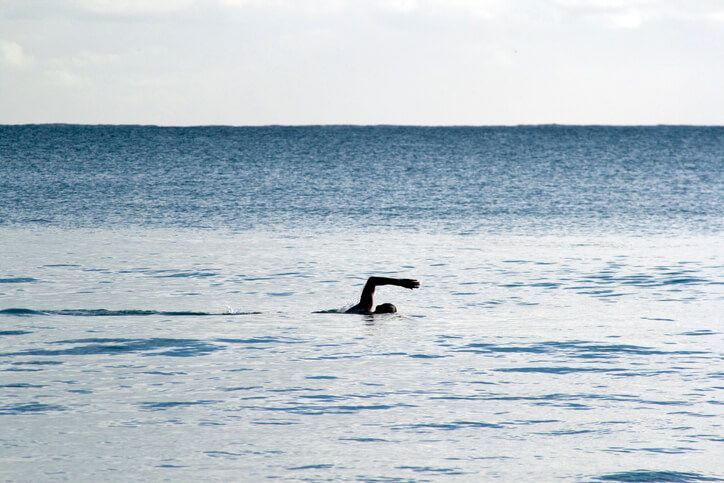Common Long Distance Swims and How to Begin Training in 7 Steps

If you’re a swimmer ready to take your hobby to the next level, learning long-distance swimming is a great way to make it happen. While anyone can jump in the pool and swim laps for a daily workout, completing an Ironman or other triathlon race is a true feat.
Read on to learn more about how to work up to becoming an expert long-distance swimmer. We’ll give you typical training schedules and other tips to prepare you for your first long distance swim.
1. Choose Your Stroke
When it comes to long-distance swimming, every move counts. You want to choose the most efficient stroke if you’re swimming a mile or more. The front crawl is a commonly chosen stroke for competitive 1 mile swims. The sidestroke is another good option to keep up an overall momentum. Those who choose sidestroke generally start out slower than those who choose front crawl, but they’ll keep a steady pace rather than slowing down after the first 10 to 15 minutes.
2. Use Proper Technique
Technique is everything if you’re completing Ironman swim distance or triathlon swim distance levels. Before you ever step foot in the pool, make sure you’ve watched plenty of videos to hone your technique in the water. Proper technique takes practice, but the general principle is to reach, pull, and glide to streamline your body. You’ll also want to practice bilateral breathing (breathing every other side, every couple of strokes).
3. Set Goals
Every swimmer will have a different goal in mind, and this goal will determine how you train. If you’re a new long-distance swimmer, your goal will likely be very different than seasoned Ironman participants. Set a realistic goal before you choose your training regime.
4. Choose a Training Schedule
Ironman swim distance is 3.86 km — the longest of any typical triathlon race. Other triathlon swim distances can range from 750 meters in a sprint, to 1.5 km in an Olympic triathlon, to 1.9 km in a half-Ironman. You’ll want to choose a training schedule to fit the race distance you’ll be participating in, gradually increasing your distance as the race approaches and peaking about three weeks before the event. A good training schedule will include temp workouts, endurance workouts, and technique practice.
5. Learn Proper Nutrition
As with any workout, you’ll greatly enhance performance by fueling yourself with proper nutrition. Swimming burns a hefty amount of calories, and you’ll want to recharge by choosing foods that will build muscle and give you energy. Swimmers should add complex carbs like whole wheat bread and vegetables to their meals during the day, and add simple carbs to their diet right before a workout. Choose quality sources of protein like eggs, milk, fish, and lean meats to strengthen muscles.
6. Practice in Open Water
Most long-distance swims take place in open water, so your training regimen should include plenty of practice in a similar environment. Prepare for swimming in open water by learning to hold your breath for longer periods, getting a wetsuit, and learning to take wide turns around buoys.
7. Mentally Prepare
Learning how to swim long distance is just as much a mental exercise as a physical workout. Mentally prepare for the experience by picturing yourself comfortable and successful in your swim. Expect to get tired, and visualize what you will do when you reach that point. Be prepared to endure, and imagine how great you’ll feel at the end.
Check Out SwimJim Today
By incorporating these tips, you’ll be well prepared for tackling the challenge of a long-distance swim. You’re sure to find great satisfaction in the journey as you enjoy the meditative power of swimming and see yourself progress.
If you’re looking to improve your swimming technique with the help of a swim instructor, SwimJim can help. We offer swim lessons for all ages and levels. Our instructors promote happy, healthy, and safe swimming with our effective swimming methods. Refine your competitive swim strokes and learn greater coordination, or start with the basics. Contact us today to learn more.
The post Common Long Distance Swims and How to Begin Training in 7 Steps appeared first on Swim Jim.







